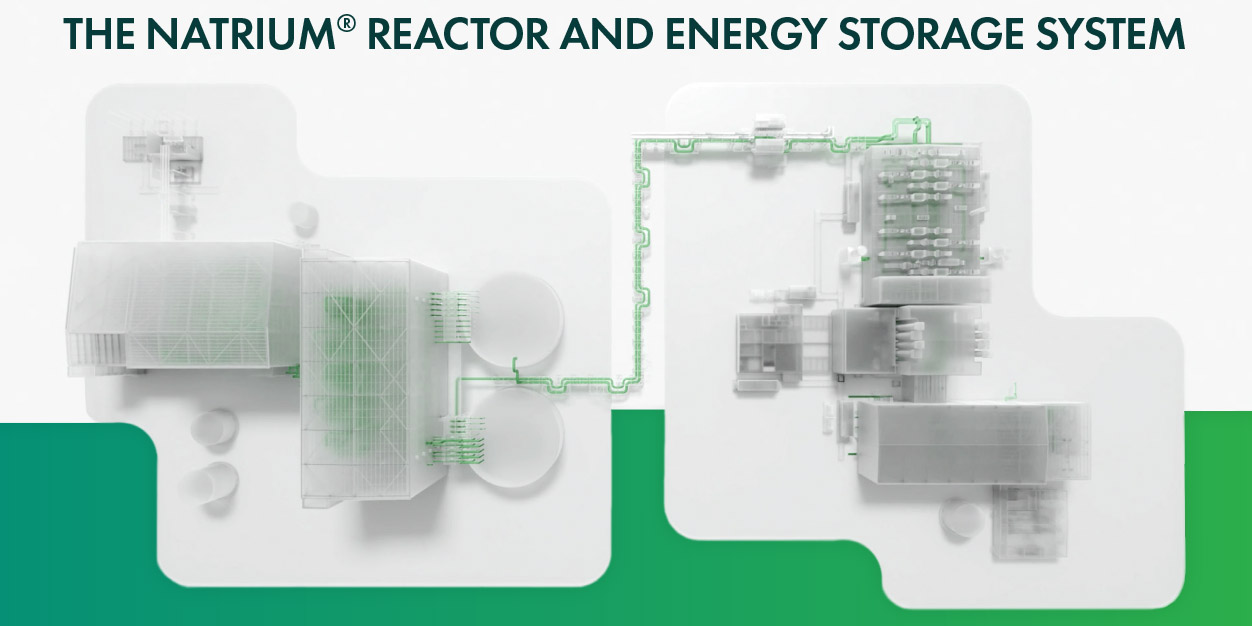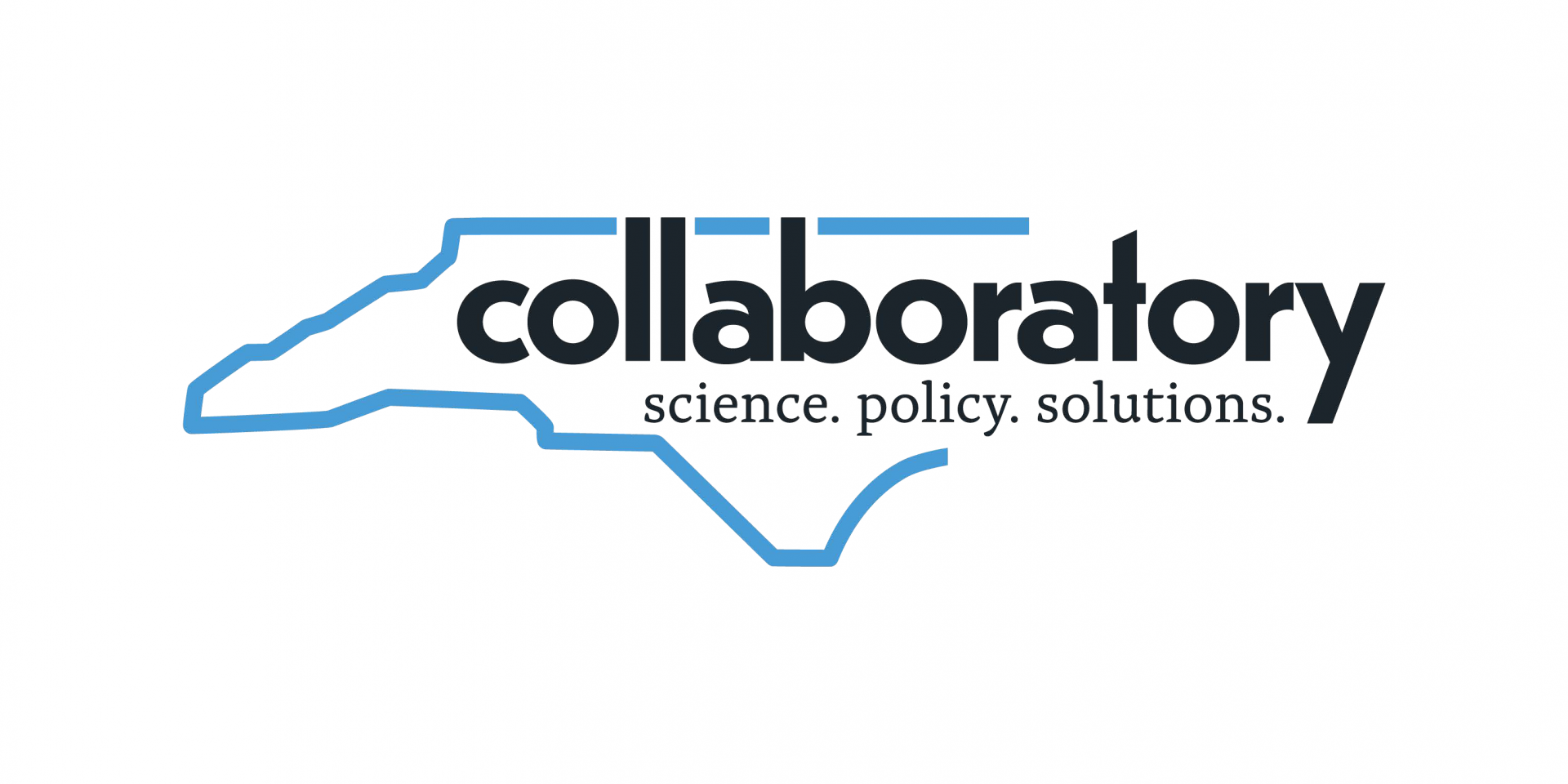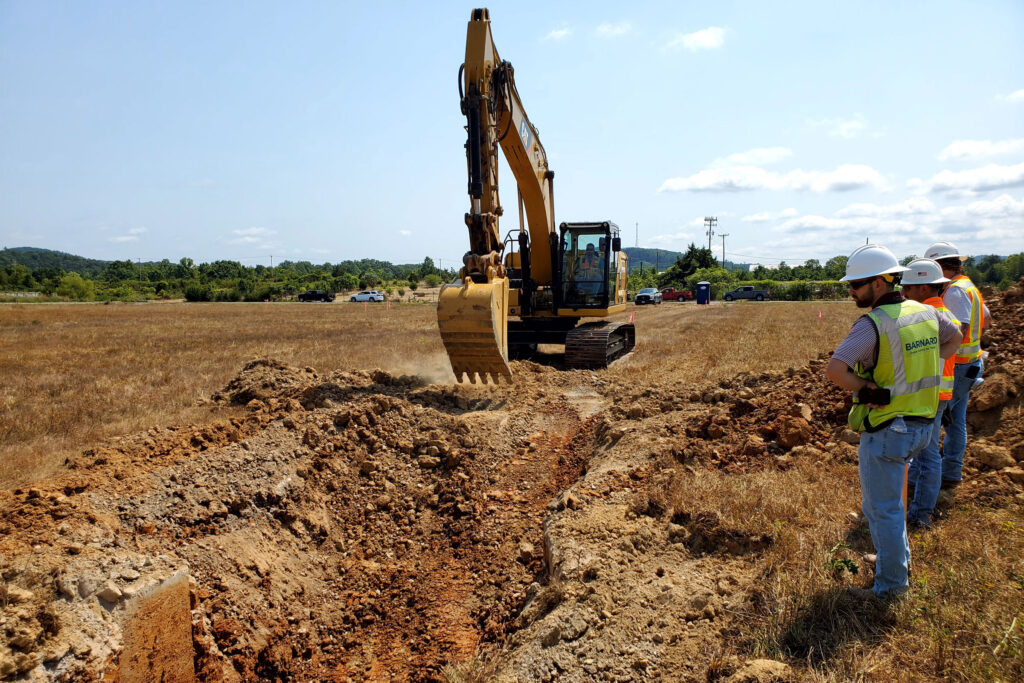Concept art of the Aurora Powerhouse. (Image: Oklo)
The Department of Energy’s Idaho Operations Office has approved the Nuclear Safety Design Agreement (NSDA) for Oklo Inc.’s Aurora Fuel Fabrication Facility (A3F) at Idaho National Laboratory. The A3F is being built to fabricate fuel assemblies for Oklo’s Aurora Powerhouse, a liquid metal–cooled, metal-fueled fast reactor with a maximum power of 75 MWe.
A ground breaking marked the beginning of advanced SMRs in Sweden. From left, Jenny Wirandi, head of engineering at OKG; Johan Svenningsson, chief executive of Uniper Sweden; Jacob Stedman, chief executive of Blykalla; Ebba Busch, Sweden’s minister for energy and business and deputy prime minister; and Per Erik Holsten, president of energy industries at ABB. (Photo: Marcus Beckford/Blykalla)
An official ground breaking on Monday for Swedish nuclear company Blykalla’s advanced reactor testing site marked a pivotal step in putting decades of research into action.
Workers begin construction at the Hermes site in Oak Ridge, Tenn. (Photo: Kairos Power)
Earlier today, on a site in Oak Ridge, Tenn., that was formerly home to the K-33 Gaseous Diffusion Plant, Kairos Power marked the start of construction on its low-power demonstration reactor. Named Hermes, the 35-MWt test reactor claims status as the first Gen IV reactor to be approved for construction by the Nuclear Regulatory Commission and the first non–light water reactor to be permitted in the United States in more than 50 years.
A cut-away view of Westinghouse’s AP300 reactor. (Image: Westinghouse)
Power generation from nuclear fission as a clean and stable source of electricity has secured the interest of policymakers and industry leaders around the globe. Last fall, the United States spearheaded a pledge at COP28 to get countries to agree to triple nuclear capacity worldwide, and recently the members of the Group of 7 (G7) nations that currently use nuclear power have reaffirmed their pledges to invest in that power source to cut carbon emissions.
As of this writing, U.S. policymakers are trying to make good on that promise by passing legislation to support nuclear power, funding the domestic fuel supply chain, and working to pass the ADVANCE Act. On top of the support from Washington, D.C., power-hungry industries like data centers and chemical engineering are looking to secure stable, carbon-free power directly from power plants.
Scott Forney (left), president of General Atomics Electromagnetic Systems and Mohamed Al Hammadi, managing director and CEO of ENEC. (Photo: General Atomics)
General Atomics announced last week that it will work with the Emirates Nuclear Energy Corporation to help find opportunities to support the United Arab Emirates.
Representatives from both companies signed a memorandum of understanding at the CERAWeek conference in Houston, Texas. The ENEC will work closest with General Atomics’ GA-EMS team, which develops new technologies and aims to deliver breakthrough solutions supporting environments from undersea to space.
Kassym-Jomart Tokayev, president of Kazakhstan (standing), looks on as the commercial uranium fuel supply contract between ENEC and Kazatomprom is signed. (Photo: Kazatomprom)
On the margins of the COP28 climate conference in Dubai, UAE, this week, Barakah nuclear plant owner Emirates Nuclear Energy Corporation (ENEC) signed its first commercial uranium fuel supply contract with Kazatomprom, in addition to memorandums of understanding with two U.S.-based advanced reactor developers—TerraPower and GE Hitachi Nuclear Energy (GEH).
Westinghouse’s Fragman (left) and OPG’s Ken Hartwick at the World Nuclear Exhibition in Paris. (Photo: Westinghouse)
Westinghouse Electric Company and Ontario Power Generation have signed a memorandum of understanding establishing a framework to identify potential areas of cooperation for the deployment of nuclear technologies in Canada, the companies jointly announced this morning. (While based in Cranberry Township, Pa., Westinghouse is owned by Canadian firms Brookfield Asset Management and Cameco.)
U.K. energy security secretary Claire Coutinho and South Korean minister for trade, industry, and energy Moon Kyu Bang, following the signing of the U.K.-ROK Clean Energy Partnership. (Photo: @ClaireCoutinho/X)
The United Kingdom has announced a new partnership with South Korea to accelerate the clean energy transition by strengthening cooperation on low-carbon technologies, domestic climate policies, and civil nuclear energy.
Signed November 22 in London by British energy security and net zero secretary Claire Coutinho and South Korean minister for trade, industry, and energy Moon Kyu Bang, the partnership promotes U.K.-South Korean business collaboration, addressing barriers to trade and encouraging mutual development of the two nations’ energy sectors.
Experimental Breeder Reactor-II (Photo: ANL)
If you head west out of Idaho Falls on U.S. Highway 20 and make your way across the Snake River Plain, it won’t be long before you’ll notice a silver dome in the distance to the north. One of the most recognizable structures in the history of nuclear energy, Experimental Breeder Reactor-II stands out from the desert landscape. The 890-square-mile site on which EBR-II is located is the former National Reactor Testing Station, now known as Idaho National Laboratory.















